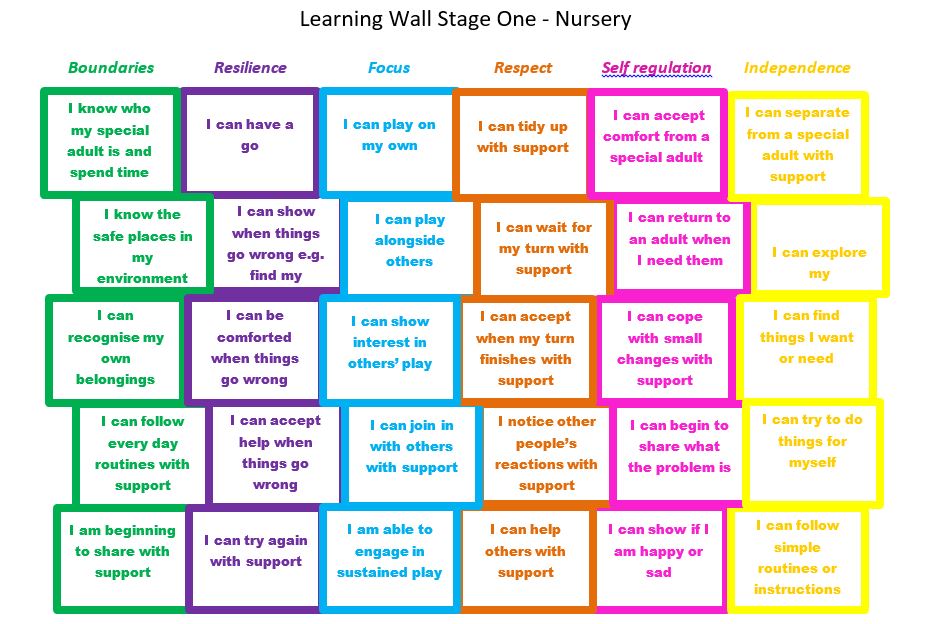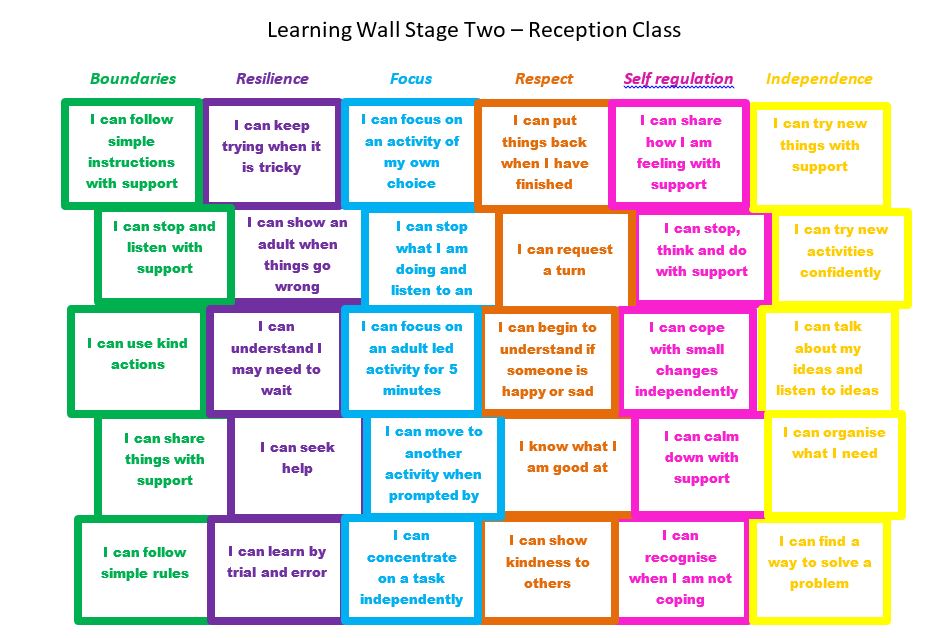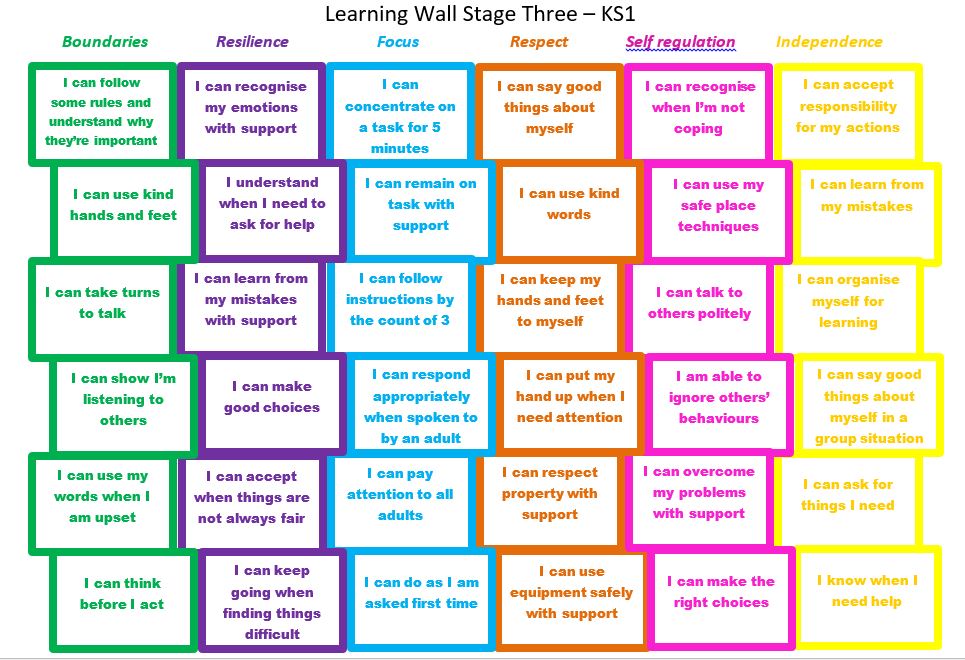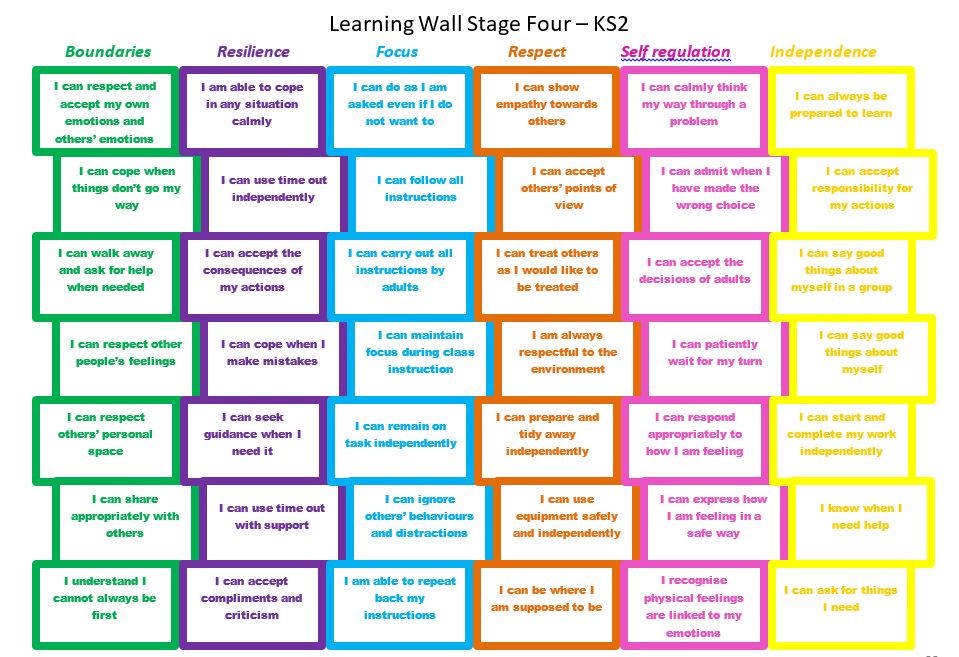The Six Strands Learning Behaviours Curriculum was developed by a group of professionals working with Primary Behaviour Service. Our Head of Schools, Ali Lockwood, was among the group invited to reshape and rewrite the book and strategies which inform the use of the Six Strands, following the successful implementation of the Strands in shaping Learning Behaviours in our mainstream school. The aim In introducing the Six Strands in our school was to provide children and adults with a clear, positive framework for developing the key values of Respect, Resilience, Focus, Self-Regulation, Boundaries and Independence. There are Curriculum Targets for Nursery, Year R, KS1 and KS2. At Alver Valley Schools these behaviours have become the values for our whole community and the strands are reflected in our school logo.




How we use the Six Strands at Alver Valley Schools:
Level 1 Whole School Community Level
We use the Six Strands to: develop key learning behaviours in school through themed assemblies that focus on a different strand each half term. The Six Strands are clearly displayed in the assembly halls where we gather and are referred to in assemblies and at other times. Classes of children have added to these displays with photos that capture the strands in action throughout the school.
As a whole school we take part in a Respect award initiative. Children who show the most respectful behaviour that day are recognised in the class and they are given the respect badge to wear the following day. Adults walking through the school celebrate with the children, asking how they managed to achieve the badge. These marks are then tallied and the children who achieved the badge the most times go to the town hall to be recognised by the Mayor. The impact on respectful behaviour was so significant, with children, staff and parents all focused and using the language related to the strand after only one term, that we now also use this approach for an additional strand each half term. In classes we award a badge each day, tallying the achievement for the whole school strand that we are thinking about in assemblies. We do so alongside a respect award that runs all year. In a similar way the children who receive the badge for the whole school strand receive an award and celebration at the end of each half term in school. The benefit of this approach is that children and adults are discussing respect, and another of the strands, daily in order to award the badges and this achievement is recognised by adults and children across the school as they go about their day.
Level 2 Class Community Level
In every class in school teachers display the Six Strands targets in the form of a wall or a tree. The displays are used as a working wall to indicate the whole class target for the week and their progress against their whole class targets over time .
At a class community level teachers (in some cases in negotiation with the class) identify a target from across any of the strands that the class community need to develop as a group. These are shared and discussed as a class group. Adults notice children making progress against these targets and this is celebrated. As the class makes progress they move onto focusing on other targets. The focus target is changed each week. In some classes the target wall or target tree grows – as targets are achieved they are added. Teachers refer back to targets that the class have already developed when a reminder is needed. Children’s progress in developing their learning behaviours is recognised on the class display using post its, photos or pegs as markers. The child who makes the most progress in developing their learning behaviours that week is celebrated in assembly with a certificate, and parents are invited to attend. All staff use the language of the Six Strands daily when developing learning behaviours; the lunchtime team have also started focusing on this at lunchtimes.
Level 3 Individual Child Level
We use the Six Strands with individual children who need some extra support to develop positive learning behaviours. We use the walls to identify strengths and areas to develop working with as many stakeholders as possible including the class teacher, support staff, parents and the child. This helps us to identify and prioritise the learning behaviours to focus on next, as well as to recognise the success for that child. We choose two targets and identify how we are going to develop and teach skills as needed. The strategies in the Six Strands materials are helpful to guide this work.
Some children will be given a target communication card, initially for three weeks, to support them to develop their learning behaviours. This will identify two targets to develop, and then feedback against these two targets is given throughout the day by the adults in class. The child then reflects with another adult at the end of the day and they share the card at home with parents on a daily or weekly basis as appropriate for the family. At the end of three weeks the targets are changed, or more frequently if required, in consultation with the class teacher and the child.
Where children have an individual behaviour management plan the targets are taken from the Six Strands. These two targets are identified along with the teaching plan, support and the response to success and challenge. This is then shared with all stakeholders and reviewed regularly.
Impact
The children of Alver Valley Schools learn about the strands, and unpick what it means to show each of the strands, in assemblies and in their classes. There is now a common language which is focused on developing children’s learning behaviours, working from a starting point of what they can do and targeting the areas for development in a positive, strategic way which children can understand. The Six Strands are now becoming embedded in other areas of the curriculum and links have been made in P4C and Forest schools.

